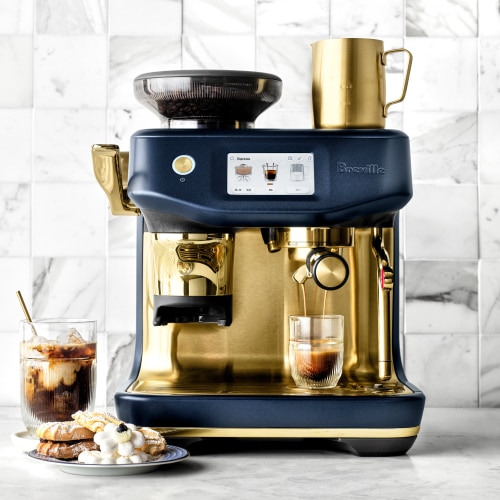
Store beef in butcher paper in your refrigerator. The ideal storage temperature for beef, 28ºF to 32ºF, is colder than most home refrigerators. Use a thermometer to determine the coldest part of your refrigerator and store the meat there. Cook meat within 3 days, or freeze it for up to 6 months.
Most beef cuts have already been trimmed of fat before they are sold. Some cuts, especially large roasts, may still have a layer of fat. Leaving about a quarter-inch of surface fat helps baste the meat while it cooks, keeping it juicy.
Cooking times in most recipes are based on room-temperature meat. Meat not at room temperature, especially large roasts, will take longer to cook, and the surface will cook far more quickly than the interior. The length of time needed to bring meat to room temperature depends on the cut. A thin steak may be ready in 15 minutes, but a standing rib roast may take 3 hours.
A high-quality steak destined for grilling needs only a generous sprinkling of salt and pepper. Other cuts benefit from additional seasoning in the form of a rub, paste or marinade. If you marinate beef, pat the surface dry before cooking with dry heat to ensure proper browning.
Allowing beef to rest after cooking – from 4 or 5 minutes for a steak to up to 2 hours for a large roast – is crucial to ensure properly cooked and juicy meat. During this resting period, the juices redistribute and the meat finishes cooking, reaching its ideal doneness temperature.
The lower temperatures in each range apply to roasts, the higher temperatures to steaks. Roasts are removed from the heat at a lower temperature because the temperature rises more during a longer resting period. Cooking beef until well done is not recommended.
Very rare: remove from heat at 110º-120ºF; ideal temperature after resting: 120º-125ºF.
Rare: remove from heat at 115º-125ºF; ideal temperature after resting: 125º-130ºF.
Medium-rare: remove from heat at 125º-135ºF; ideal temperature after resting: 130º-140ºF.
Medium: remove from heat at 130º-140ºF; ideal temperature after resting: 145ºF.
Medium-well: remove from heat at 145º-160ºF; ideal temperature after resting: 155º-160ºF.
Best for stir-frying: tri-tip, top sirloin and flank steaks; filet mignon.
Best for panfrying: rib-eye, New York strip, T-bone, and porterhouse steaks; chuck (burgers).
Best for grilling: rib-eye, skirt, sirloin, and strip steaks; chuck (burgers, kabobs).
Best for roasting: stuffed flank steak; bone-in rib-eye (standing rib roast); whole tenderloin.
Best for braising: short ribs, brisket, shank, and chuck.
American flavors: blue cheese, bourbon, horseradish, mustard, mushrooms, watercress.
Asian flavors: garlic, ginger, soy, fish sauce, chiles.
Mediterranean flavors: rosemary, peppercorns, parmesan, wine, balsamic vinegar, leeks, fennel, arugula, tomatoes, olives, oregano.
Latin flavors: lime, chipotle, cilantro, tequila.













